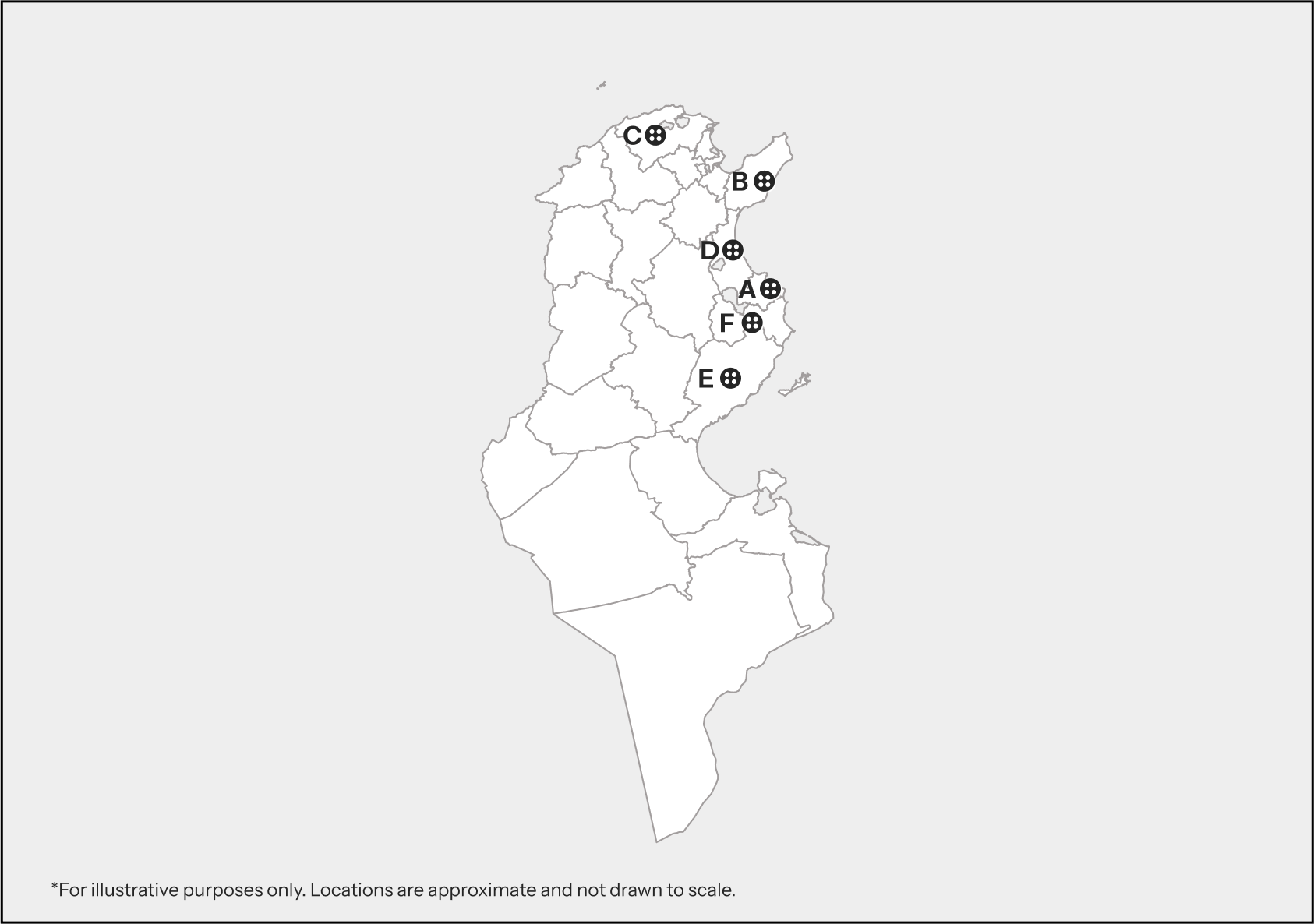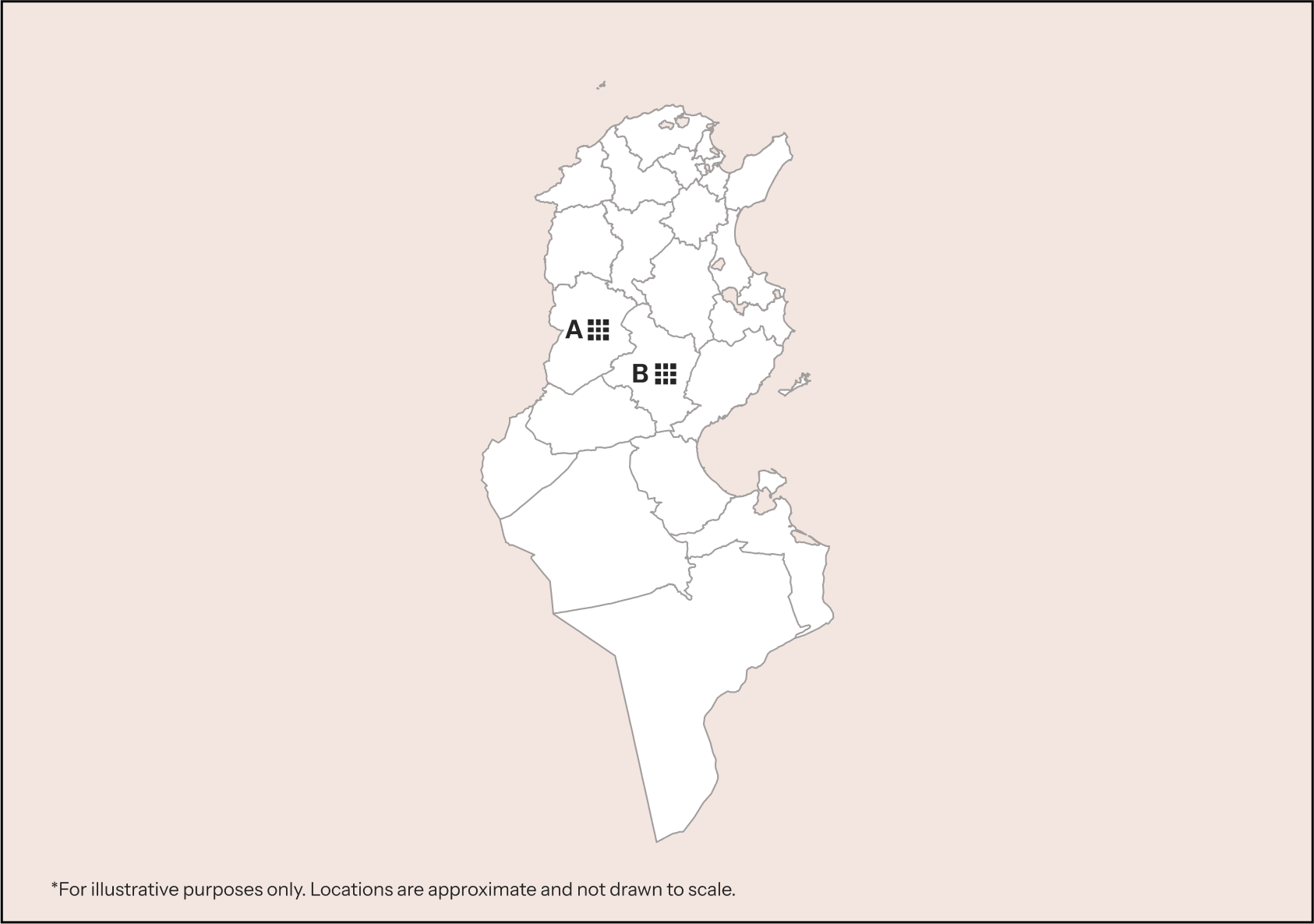Tunisia
download summary
Country Overview
No items found.
*All data is in tonnes per annum
TEXTILE WASTE*
31,000
Post consumer textile waste
100% cotton
Cotton- rich blends
Poly- rich blends
100%v Polyester
Other synthetics
Other natural fibres
Other manmade cellulosic fibres
pre consumer textile waste
Post Industrial textile waste
31,000
100% cotton
18.00%
Cotton- rich blends
38.00%
Poly- rich blends
16.00%
100%v Polyester
7.00%
Other synthetics
7.00%
Other natural fibres
6.00%
Other manmade cellulosic fibres
8.00%
Imported textile waste
100% cotton
Cotton- rich blends
Poly- rich blends
100%v Polyester
Other synthetics
Other natural fibres
Other manmade cellulosic fibres
*This data is from UNIDO switchmed North Africa
KEY POINTS ON Textiles & Apparels LANDSCAPE
> 80%
Enterprises are Export Centered
T&C sector is Tunisia’s largest industrial employer, representing 31% of the manufacturing workforce and contributing 18% of total goods exports. More than majority of the enterprises are fully export-oriented, with apparel making up 86.5% of output. The T&A industry is supported with FTAs with Sub-Saharan Africa, the Middle East, and the European Union. Leading global brands sourcing from Tunisia include YSL, Diesel, Guess, Levi’s, Hugo Boss, and Tommy Hilfiger, among many others.
431,188 Kg
Tunisia’s 2023 Imports of Printed Cotton Fabrics (≥85% Cotton, Woven)
Despite strong export performance, Tunisia’s textile and clothing sector is heavily dependent on imported yarn and fabrics, which make up 67% of total imports. Local fabric production covers only about 7% of industry demand, leaving the sector reliant on external suppliers. Tunisia is also a net importer of cotton, further underscoring its raw material dependence.
90%
Foreign Investors in Tunisia’s Textiles Sector are European
More than 40% of firms are foreign direct investments. The sector contributes 28% of total manufacturing value added and is fully integrated across the value chain, encompassing spinning, weaving, and finishing.
< 6kT
Overall exports of recycled materials
Tunisia’s ability to recycle high-quality fibres is constrained by limited domestic spinning, with only six spinning companies, two of which have over 100 employees. Small volumes of synthetic fibre waste, mainly acrylic, undergo low value recycling in the carpet industry, while most high-quality cotton-rich waste is exported to Europe, often without shredding.
waste cost
waste Type
composition
price
notes
No data available
- More than half of all textile waste generated by manufacturing processes is cutting waste. Specifically, non-knit cutting waste amounts to about 14,000 tons per year, while knit cutting waste accounts for approximately 5,400 tons
production clusters
Key regions with apparel production
Monastir(A), Nabeul(B), Bizerte(C), Sousse(D), Sfax(E), Mahdia(F)

- Tunisia offers a large pool of skilled, low-cost labour, along with affordable rents for office/industrial spaces and low utility costs.
Waste regulation
No data yet.
Waste trade
141.2 kT
Import quantities (HS 6309, 631010)
48.93 kT
Export quantities (HS 6309, 631010)
green energy
1.74%
Share of modern renewables in final energy consumption
- Renewable Electricity Generation by source: Wind (49%), Solar PV (48.6%), Hydro (2.3%)
- Investment Fund Subsidies (Decree 2017-389, Article 3): It offers equity contributions of up to 60% for renewable energy projects costing ≤ 2 million TND, and 30% for larger ones providing significant financial support for green energy transition.
- National Fund for Energy Management (FNME) under the Tunisian Solar Plan (TSP): Established to promote renewable energy and energy efficiency, FNME offers subsidies up to 20% to industrial actors for investments in solar water heaters, energy audits, and clean energy technology upgrades.


